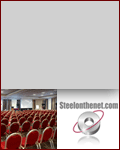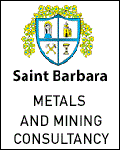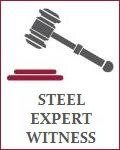Steel Industry Glossary of Terms: A-C.
Technical glossary - jargon made simple
| Term | Glossary Explanation |
| ADC | Apparent domestic consumption. See apparent consumption |
| Alloy steel | Refers to steels made with deliberate additions of one or more alloying elements during steelmaking to enhance the properties of the steel. The most common alloying elements are Mn, Cr, Mo and Ni |
| Anneal | Refers in metallurgy to heat treatment which is used to impart changes in mechanical properties such as strength and hardness. Typically, the annealing process is used to induce softness and to relieve stress, allowing the steel to be further worked |
| ADI | Acciaierie d'Italia. Italian steel plant, formerly known as Ilva, based in Taranto. The plant was for many years one of the largest steel production sites in Europe. Ownership reverted from the Riva family to the Italian government in 2012 when major environmental misdemeanours came to light. ArcelorMittal took majority control of the Taranto plant in 2017. |
| AOD | Argon-Oxygen Decarburisation. A secondary steelmaking process in which oxygen and argon are blown into the molten steel. Enables carbon to be removed without oxidising chromium. Main method of refining stainless steel (see also VOD) |
| API | American Petroleum Institute - the trade association that represents the US oil and gas industry. The API also has an important role in the development of industry standards which have broad international acceptance and which include steel grades (for example) for use in oil and gas transmission pipelines |
| Apparent consumption | The mathematical sum of production plus imports minus exports. The difference between 'apparent' consumption and 'real' consumption is that the latter definition also recognises changes in stock levels. The phrase 'apparent consumption' is often used interchangeably with 'apparent domestic consumption' (abbreviated ADC) |
| ASU | Apparent steel use. Another way of referring to apparent steel consumption |
| Bar-in-coil | Steel bar [round, square or hexagonal] that is in coiled form, rather than in lengths. Bar products 10mm in diameter and below are typically coiled |
| Base metals | The glossary term typically refers to the set of easily corroding [non-ferrous] metals that includes copper, aluminium, lead, nickel, tin and zinc |
| BAT | Best available technique. Typically used in the context of environmental performance, BATs have supporting technical reference documents known as BREFs, which are reference benchmarks |
| Beneficiation | Reference in the mining industry to the process of separating ore by crushing and other means into mineral and waste products |
| Billet | A semi-finished long product of up to 150 mm square cross-section with round corners. Billets can be continuously cast or hot rolled from either ingots or larger concast billets and blooms. They are re-rolled or forged into other forms |
| Black plate | Glossary phrase refers to uncoated cold rolled steel, typically thin gauge material between 0.14-0.5 mm thick. The most common application of black plate is production of tinplate for the packaging industry |
| Bloom | A semi-finished long product of greater than 150 mm square or rectangular cross-section. Blooms can be produced by continuous casting or by rolling from ingot. Continuously cast rounds of 300mm diameter or greater are also referred to as blooms |
| Body-in-white | Glossary item refers to car body shell after the welding stage but prior to painting of the steel |
| BOF | Basic oxygen furnace, which converts hot metal (pig iron from the blast furnace) into liquid steel by blowing oxygen into the furnace to remove carbon as carbon monoxide gas |
| BREF | Stands for best reference and refers to best available technique documentation which is often used as a benchmark environmental performance measure |
| BRIC | Reference to Brazil, Russia, India and China. In iron and steel, these BRIC countries are notable because of their high expected economic growth rates in the coming 20-30 years and the consequent implication for growth in future steel demand. Compared to the industrialised world, the BRIC countries also have relatively low labour costs and / or access to low cost energy or steelmaking raw materials making them strategically attractive locations for the manufacture of steel |
| Bright drawing | The cold drawing of steel bars through a die in order to produce a product with close dimensional tolerances, improved mechanical properties and a bright finish. Shotblasting or pickling to remove surface scale is normally carried out prior to bright drawing |
| Campaign | Period of continuous blast furnace operation: 20-25 years represents a fairly typical campaign |
| Capacity creep | Trend for slow increase in capacity over a period of years, arising because of learning, incremental investment, modernisation of maintenance practices etc. In the steel sector, capacity creep results in steel plant capacity increasing on average by perhaps 0.5% to 1% per annum |
| CAPL | Continuous annealing and processing line, used for the production of cold rolled steel. The continuous anneal process is to be distinguished from batch annealing. Whilst the former is better suited to high volume production (e.g. on automotive-dedicated production lines) the latter is best suited to small job lots and / or specialty grades |
| Carburisation | Process of introduction of carbon into steel - typically involving heat treatment - to improve surface hardness |
| Cast iron | A ferrous alloy with more than 2.1% carbon content and typically also with significant amounts of silicon, normally in the 1 - 3% range |
| CBAM | Mechanism for adjusting steel import price in order to compensate for higher carbon emmissions associated with steel production in other countries |
| CCS | Carbon capture and storage. Refers to process for capture and long-term sequestration of carbon dioxide. In steel operations, this can involve making use of the CO2 in underground oilfields, where it can assist with enhanced oil recovery |
| Cobble | An incident when bar that is being hot rolled either jams in the mill guides, resulting in delays to reset the guides and rolls, or comes out of its normal rolling trajectory, frequently landing (often at high speed) in the area adjacent to the rolling mill stands |
| Coke | A solid carbon based product derived from baking bituminous coal at high temperature to remove volatile constituents. Metallurgical coke ['met coke'] is used as the main fuel in the smelting of iron ore in a blast furnace |
| Cold finishing | Processing of steel either with surface removal (polishing, grinding, peeling) or without surface removal (e.g. through wire drawing), primarily for further machining into shapes such as gears, shafts, hydraulic fittings etc |
| Cold heading | Also known as cold upsetting, or fastener production. Glossary term refers to the production of nuts and bolts through cold deformation |
| Cold roll formed sections | The term usually refers to hot rolled steel (although it can be cold rolled steel) that is roll formed [or 'bent'] cold into angles, channels or shaped / corrugated sheet. The word 'cold' refers to the forming process, not to the type of steel that is used |
| Consteel® | Steelmaking process in which the raw feed materials are heated and charged continuously into an EAF and melted by immersion in the liquid steel present in the electric furnace |
| Continuous casting | A process in which molten steel is poured into a water-cooled copper mould for gradual solidification as it is drawn down the caster, turning into a solid steel billet, bloom, or slab. Compared to ingot casting, continuous casting has evolved as the preferred method for making semi-finished steel because of much better yield, productivity and cost performance |
| Corex ® | Reduction process for production of hot metal from iron ore using coal. Key advantages over traditional integrated steelmaking include the ability to use non-coking coal [eliminating the need for coke batteries] and the ability to iron ore pellets [eliminating the need for sinter plant] |
| Cost price squeeze | Refers to the long term trend in the steel sector for new technology to lead to cost improvements - for example through introduction of continuous casting replacing ingot casting - meaning reductions over time of overall price and cost levels. The trend is sometimes quantified as an erosion of nominal revenue of ~1% per annum or more |
| CSP | Compact strip production - see glossary under 'thin slab casting' |
© 2001 -
2024 Steelonthenet.com. All rights reserved.
To contact us about this steel industry glossary of terms please email info@steelonthenet.com.
To contact us about this steel industry glossary of terms please email info@steelonthenet.com.









